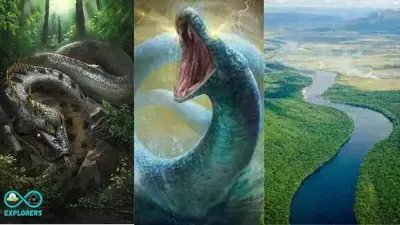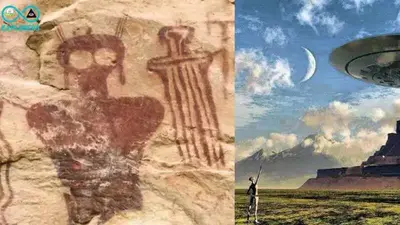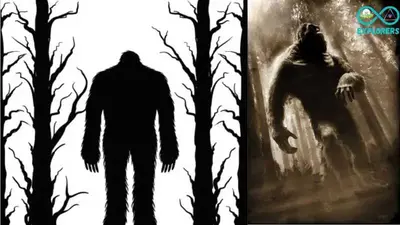Paranormal Activity
120 Million Old Dashka Stone Map: Cosmic Guidelines Used By The Gods
It is believed by some that the enigmatic artifact Dashka Stone is the blueprints that the creator of the world used to build the world. Since its discovery in 1999, the stone tablet known as the Map of the Creator has mystified scholars. Experts from Russia say that the stone map might be as old as 120 million years, despite the fact that this assertion may appear to be impossible.

Along with the environs of the Ural Mountains, the Dashka stone also shows a number of civil engineering projects such as waterways stretching over 12,000 kilometers (7457 miles), multiple dams, and some Mysterious hieroglyphic notations. As of this writing, the hieroglyphs have not been figured out, but they are thought to be an old form of Chinese. The Daksha Stone was discovered by archaeologists from Bashkir State University on July 21, 1999.
The stone was discovered in the Ural Mountains of eastern Russia. The size of the tablet was the first thing that struck the people who found it. The artifact measures 58 inches (148 cm) high, 42 inches (106 cm) wide, 6 inches (16 cm) thick, and weighs one ton. Further analysis revealed that the tablet appears to depict a 1:1.1 km scale topographical map of Bashkiria, a region within the Ural Mountains.
The experts were highly surprised by the topographical map, as it was very accurate. The team that discovered the artifact was directed by Bashkir State University professor Alexandr Chuvyrov. The artifact was named Dashka by the Alexandr in honor of his granddaughter, who was born on the day of the discovery.

“At first sight, I understood that was not a simple stone piece. But a real map, and not a simple map, but a three-dimensional. You can see it yourself.”
Alexander Chuvyro
Three levels of the Map of the Creator clearly indicate that it was not natural but rather man-made. The initial layer is a cement or ceramic compound made from dolomite, and it’s around 7 inches (18 cm) thick. The second layer is a thick one inch (2.5 centimeters) of silicon-enhanced diopside glass.
The third layer, consisting of a calcium-porcelain combination and measuring only a few millimeters in thickness, may serve to further preserve the tablet or to better highlight the stone by diffusing the light.
“How did we manage to identify the place? At first, we could not imagine the map was so ancient. Happily, relief of today’s Bashkiria has not changed so much within millions of years. We could identify Ufa Height, while Ufa Canyon is the main point of our proofs, because we carried out geological studies and found its track where it must be according to the ancient map. Displacement of the canyon happened because of tectonic stabs which moved from East. The group of Russian and Chinese specialists in the field of cartography, physics, mathematics, geology, chemistry, and Old Chinese language managed to precisely find out that the slab contains the map of Ural region, with rivers Belya, Ufimka, Sutolka. You can see Ufa Canyon – the break of the earth’s crust, stretched out from the city of Ufa to the city of Sterlitimak. At the moment, Urshak River runs over the former canyon.”
Alexander Chuvyro
It was alleged that the Dashka Stone was constructed 120 million years ago by a geographic creator, which is probably untrue, but the Dashka Stone does testify to a more advanced Ural culture than was previously supposed. The age of the artifact was determined by analyzing two ancient seashells that had been sealed inside it. The first shell, Navicopsina munitus, belonged to the Gyrodeidae family and could have been 500 million years old.
Ecculiophalus princeps, a member of the subfamily Ecculiomphalinae, is the second shell, and it may be as old as 120 million years. Nobody knows how these shells survived with the Dashka Stone. It is uncertain whether it was purposefully placed inside the stone or the shells accidentally got there. Scientists estimate that the tablet, together with the ancient shells, was created around the year 3000; nevertheless, it is quite challenging to radiocarbon date the engravings.

Given the complexity and intricacy of the Dashka Stone map, this is still an astounding finding from the current time period. As usual, there are still some skeptics who claim that the line on the stone resembling the map was a mere coincidence.
Leave us your thoughts in the comment section.
-

 Paranormal Activity1y ago
Paranormal Activity1y agoThe Alien Encounter In California – Tall Alien Creature, Flickering Lights, And Super-Fast UFO
-

 Paranormal Activity1y ago
Paranormal Activity1y agoThe Lost Years of Jesus Christ in India: Connection Between Hinduism And Jesus
-

 Paranormal Activity1y ago
Paranormal Activity1y agoBaba Vanga 2023 Predictions – From Alien Visit To Lab Babies And Many More
-

 Paranormal Activity1y ago
Paranormal Activity1y agoYacumama: The Apex Predator That Lives In The Amazon River Basin
-

 Paranormal Activity1y ago
Paranormal Activity1y agoThe Case Of Reincarnation Of Swarnlata Mishra – Identified Past Life Family Members And Incidents Accurately
-

 Paranormal Activity1y ago
Paranormal Activity1y agoThe Scary Tale Of The Dead Santa Claus By Big John
-

 Paranormal Activity1y ago
Paranormal Activity1y ago8,000 Years Old Shogo Canyon Cave Paintings Shows Ancient Alien Contact
-

 Paranormal Activity1y ago
Paranormal Activity1y agoThe 1955 Alien Encounter In Sweden – Extraterrestrial Message, Humanoid Alien, & A Beacon Device



























